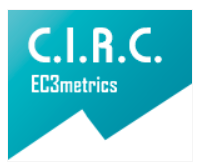Assessment tool for language in aphasias and related disorders (IELAT )
Instrumento de evaluación del lenguaje en adultos con afasia o trastorno cognitivo comunicativo (IELAT)
Main Article Content
Assessment of language disorders in adults has been directed to the use of standardized batteries injuries neurobiological correlate with linguistic characteristics of types of aphasia. Its result is labeled within user groups with deficiencies not involve the special and everyday user. In this study design an instrument to assess adult language disorders, based on a model of language processing deficits also determine, confirm or discard hypotheses of altered processes and pre-served. This gives the objective, guides the real treatment and rehabilitation communicative user. The instrument has 90 items with suggested activities for tasks proposed by the evaluator, these correlated with 12 processes Cognitive Model of Language Processing (Cuetos, 1998). The instrument broad perspective of the evaluation - language disorders diagnosed adult and guides assessment and treatment to communicative user realities.
Downloads
Publication Facts
Reviewer profiles N/A
Author statements
Indexed in
- Academic society
- Bogotá: Corporación Universitaria Iberoamericana
- Publisher
- Bogotá: Corporación Universitaria Iberoamericana
Article Details
Ardila, A. & Benson, F. (1990). Brain Organization of Language and Cognitive Processes. New York, USA: Plenum Press.
Bayles, K. & Tomoeda, Ch. (1993). Arizona Battery for Communication Disorders of Dementia(ABCD). Texas, USA: PRO-ED.
Bermejo, R. & Del Ser, J. (1993). Demencias: Conceptos Actuales. Madrid, España: Ediciones
Díaz de Santos. Bruna, O, Junqué, C. & Mataro, M. (2004). Neuropsicología del lenguaje: funcionamiento normal y patológico. Barcelona, España: Elsevier.
Brookshire, R.H., (1992). An introduction to neurogenic communication disorders (4a.ed.). Chicago, USA: Mosby Year Book MedicalPublishing.
Cohen, R. & Swerdlik, M. (2001). Pruebas y evaluaciones psicológicas: introducción a las pruebas y a la medición. México: Mcgraw- Hill.
Colheart, M., Kay, J. & Lesser, R. (1995). PALPA en inglés. EPLA. Evaluación del procesamiento lingüístico en la afasia (F. Cuetos & F. Valle, Trads). Madrid, España: Taylor& Francis Ltd. (trabajo original publicado
en 1991).
Cuetos, F. (1998) Evaluación y rehabilitación de las afasias. (3a.Ed.). Barcelona, España:Colimbo Ediciones.
Cuetos, F. & González- Nosti, M. (2000). BETA.Bateria para la evaluación de los trastronos afásicos. Madrid, España: EOS.
Estévez, A. & García, C. (1995). Enfermedad de Alzheimer: Cuando se acaba la memoria. Barcelona, España: Colimbo Ediciones.
Fajardo L. & Moya, C. (1999). Fundamentos Neuropsicológicos del Lenguaje. Bogotá, Colombia: Ed. Instituto Caro y Cuervo.
González, P. & González, O. (2011). Afasia. De la teoría a la práctica. Madrid, España: Ed Médica Panameriacana.
Goodglas & Kaplan (1997). Evaluación de la afasia y trastornos relacionados: Test de Boston. (2a. ed.). Madrid: España: Ed. Médica Panamericana.
Helm-Estabrooks, N & Martin, A. (2005). Manual de la Afasia y de terapia de la afasia. Texas, USA: Ed. Médica Panamericana.
Hernández, J., Malagón, A. & Rodríguez, J.(2006). Demencia tipo Alzheimer y Lenguaje. Bogotá, Colombia: Colección Leccionesde Rehabilitación y Desarrollo Humano - Centro Editorial Universidad del
Rosario.
Hernández, B. J., Malagón, A.C., Pardo, R., Rodríguez, L.J. (2005). Análisis del desempeño del lenguaje en sujetos con demencia tipo Alzheimer (D.T.A.). Revista Facultad de Medicina Universidad Nacional de Colombia,
(1), 3-9.
Jiménez, M. (2011). La afasia: evaluación e intervención logopédica. Revista innovación y experiencias educativas, 48, 1-19.
Kalbe, E., Reinhold, N., Brand, M., Markowitsch, H. & Kessler, J. (2005). A new test battery to assess aphasic disturbances and associated cognitive dysfunctions –German Normative
Data on the Aphasia Check List. JClin Exp Neuropsychol 27, 779-94.
Kolb, B. & Whishaw, I. (2006). Neuropsicología Humana (5a. Ed.). Madrid, España: Ed.Médica Panamericana.
Webb, W. & Adler, R. (2007). Neurología para Patólogos de Habla y Lenguaje (5a. Ed.). Madrid, España: Ed Médica Panamericana.
Norman, M., Horner, J. & Ripich, D. (2007).Dementia: Communication Impairments and Management. In A. F. Johnson & B. H.
Jacobson (Eds.), Medical speech-language pathology: a practitioner’s guide. New York,USA: Thieme Medical Publisher Inc.
Shallice, T. (1988). From neuropsychology to mental structure. New York, USA: Cambridge University Press.
Mandel, R.G. y Johnson, N.S. (1984). A developmental analysis of story recall and comprehension in adulthood. Journal of verbal learning and verbal behavior, 23, 643-659.
Sabe, L., Courtis, M., Saavedra, M., Prodan, V.,Luján-Calcagno, M. & Melián, S. (2008). Desarrollo y validación de una batería corta de evaluación de la afasia: “bedside del lenguaje”.
Utilización en un centro de rehabilitación. Rev Neuro, 46(8), 454-460.
Tolosa, E. & Alom, J. (1990). Enfermedad de Alzheimer. Barcelona, España: Ediciones Doyma.
Wertz, R.T. (1985). Neuropathologies of speech and language: an introduction to patient management. En D.F. Johns (Ed..), Clinical management of neurogenic communicativedisorders. (2nd edit.) (pp.1-96). Boston, USA: Little, Brown












